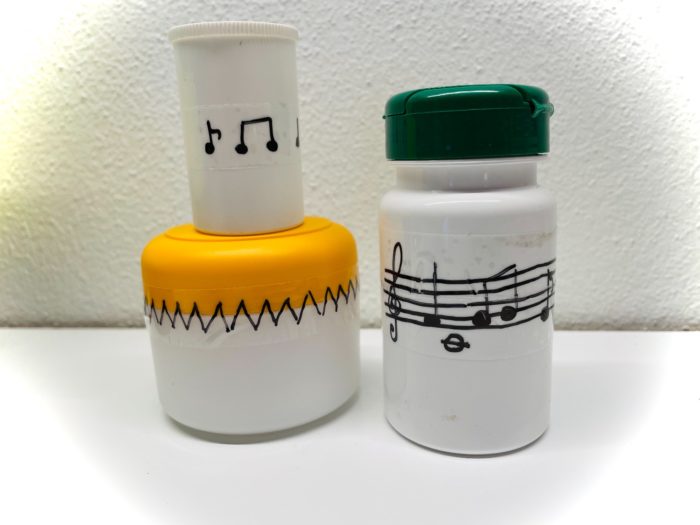Building instruments yourself is not difficult at all. Find an angular tin can without a lid, a paper and felt pens for optical design and a few household rubbers for this can. How the can is built, that I show you here.
Media Education for Kindergarten and Hort
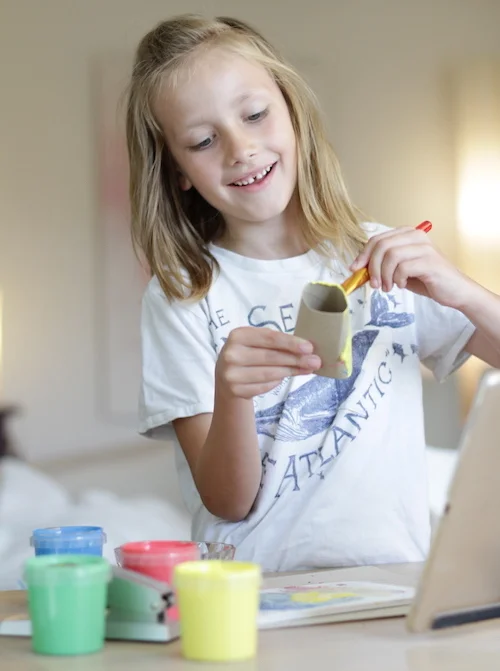
Relief in everyday life, targeted promotion of individual children, independent learning and - without any pre-knowledge already usable by the youngest!
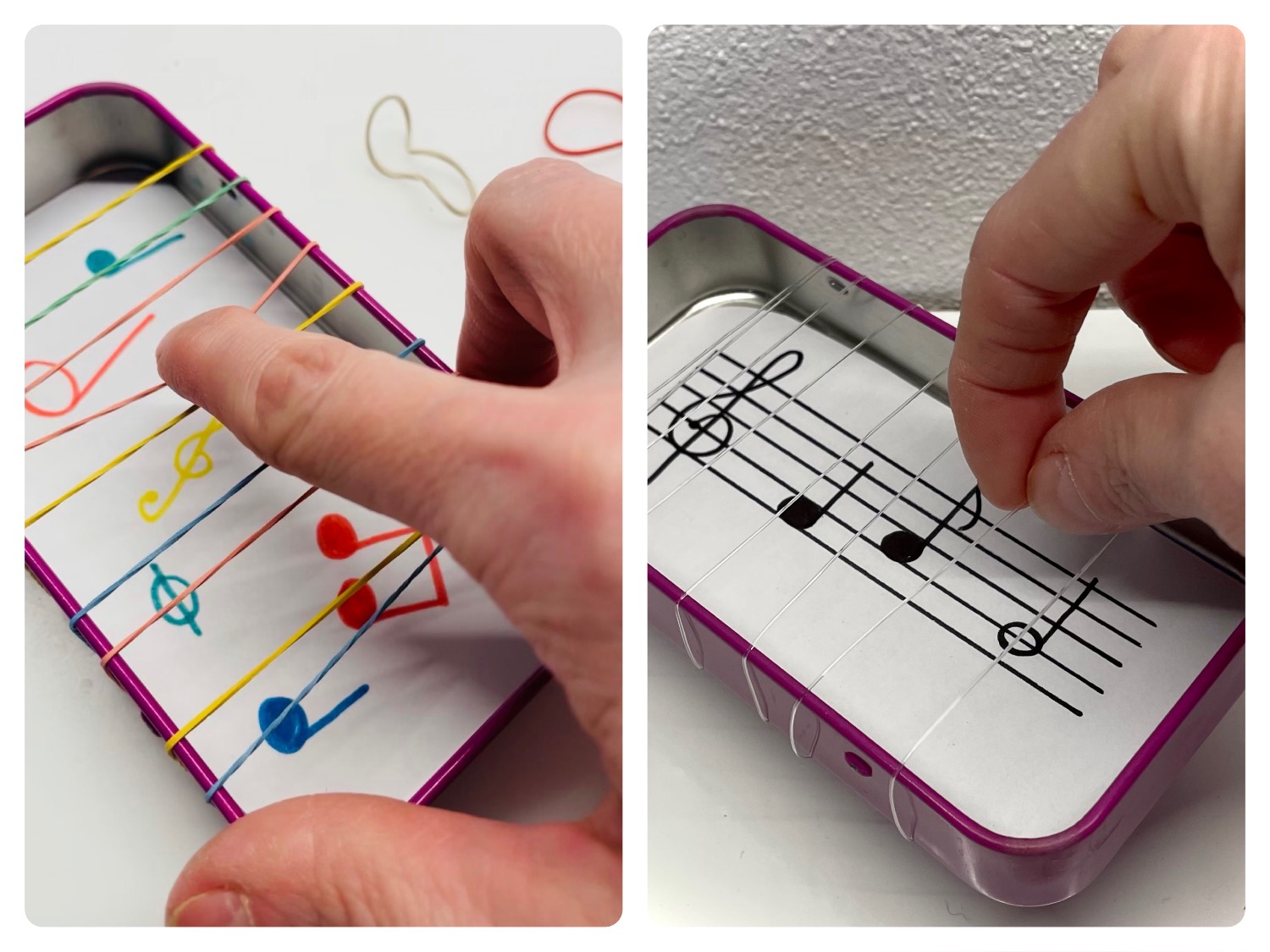
Find your materials together and put out the craft pad. First you need the square tin can.
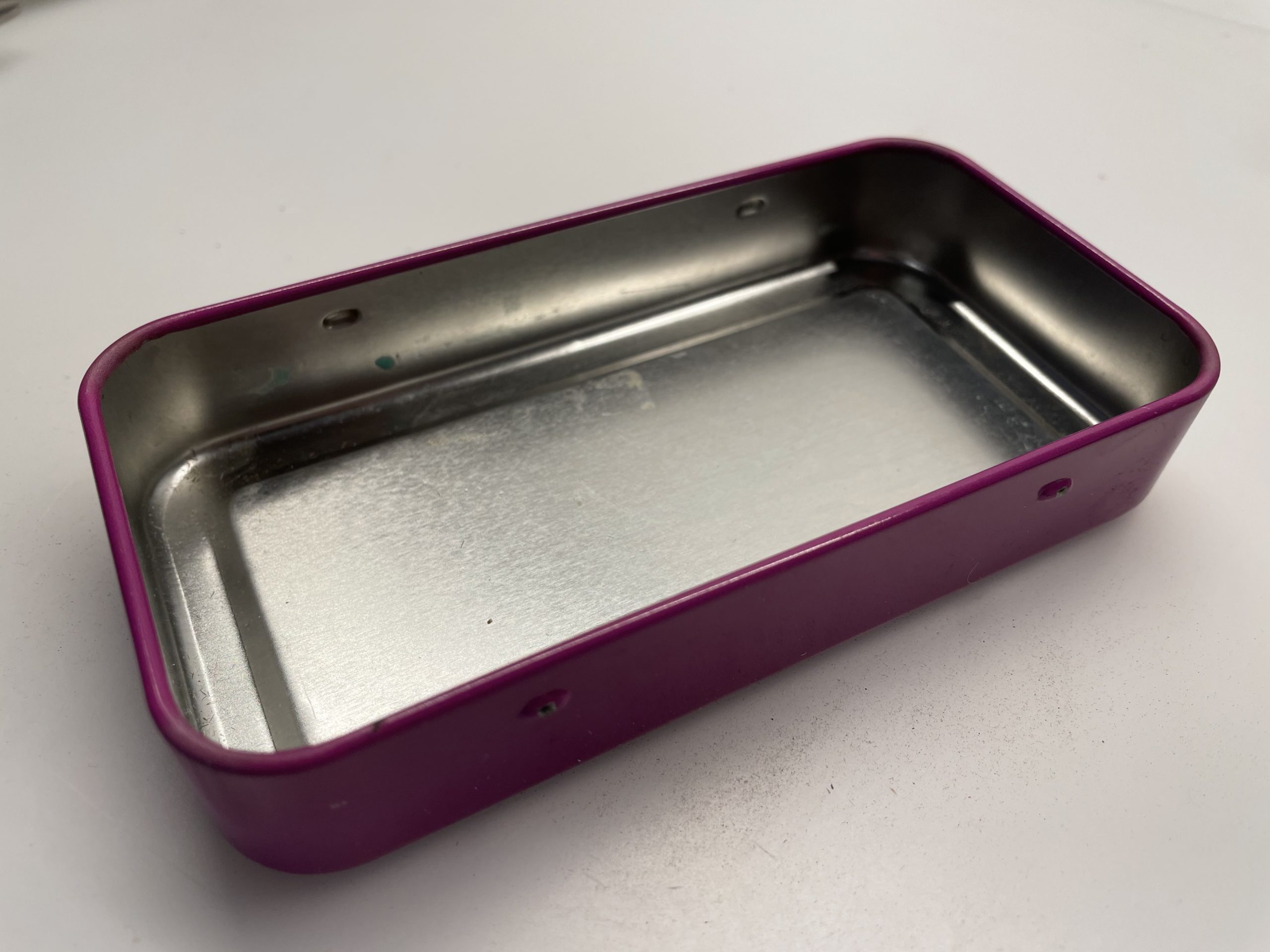
Create a insert sheet in the size of your tin can. To do this, cut a paper to the size of your tin can. Then, for example, you paint music notes, note keys, etc. on it.
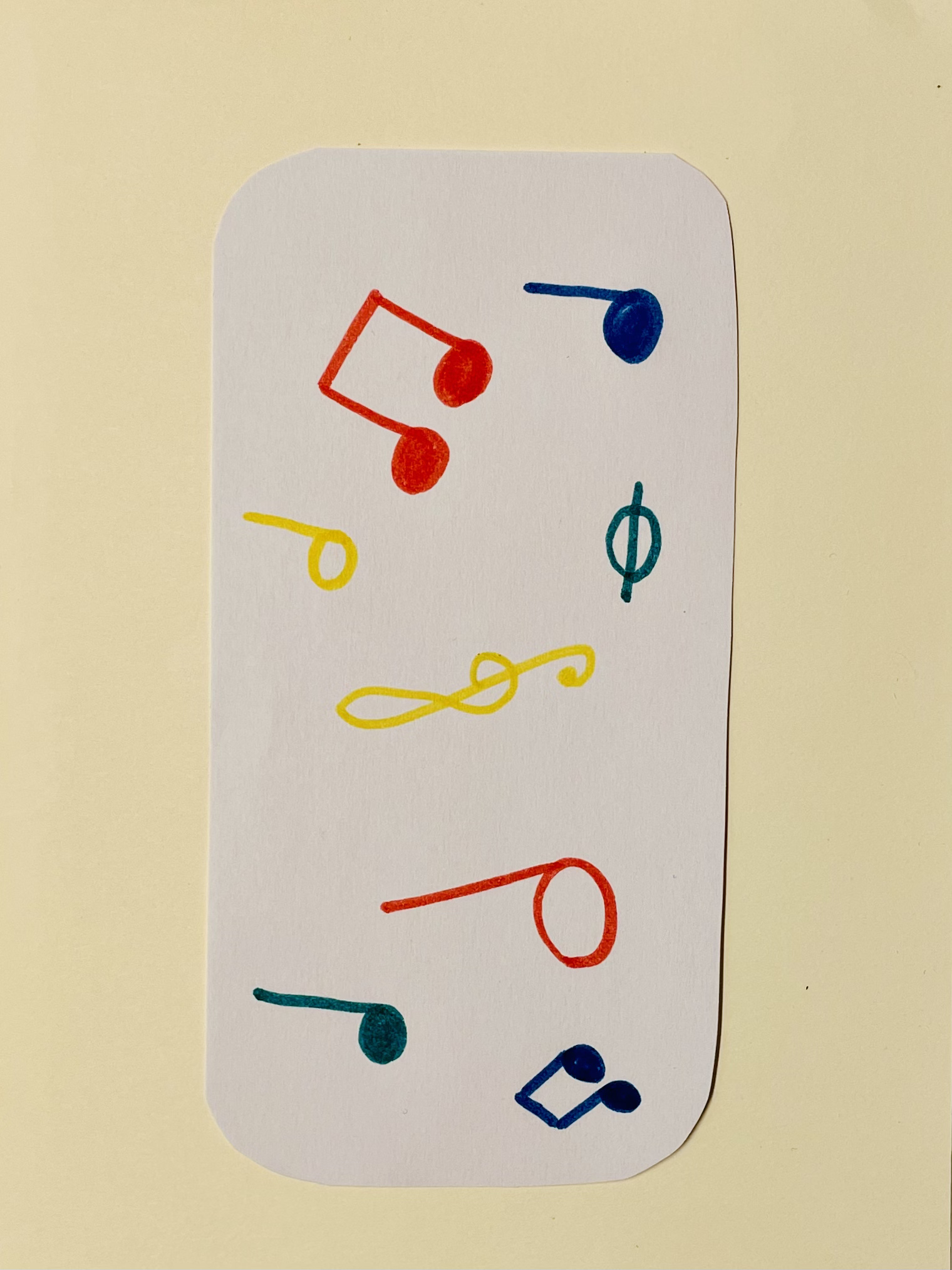


Then put the insert in the can. Fix it with an adhesive point.
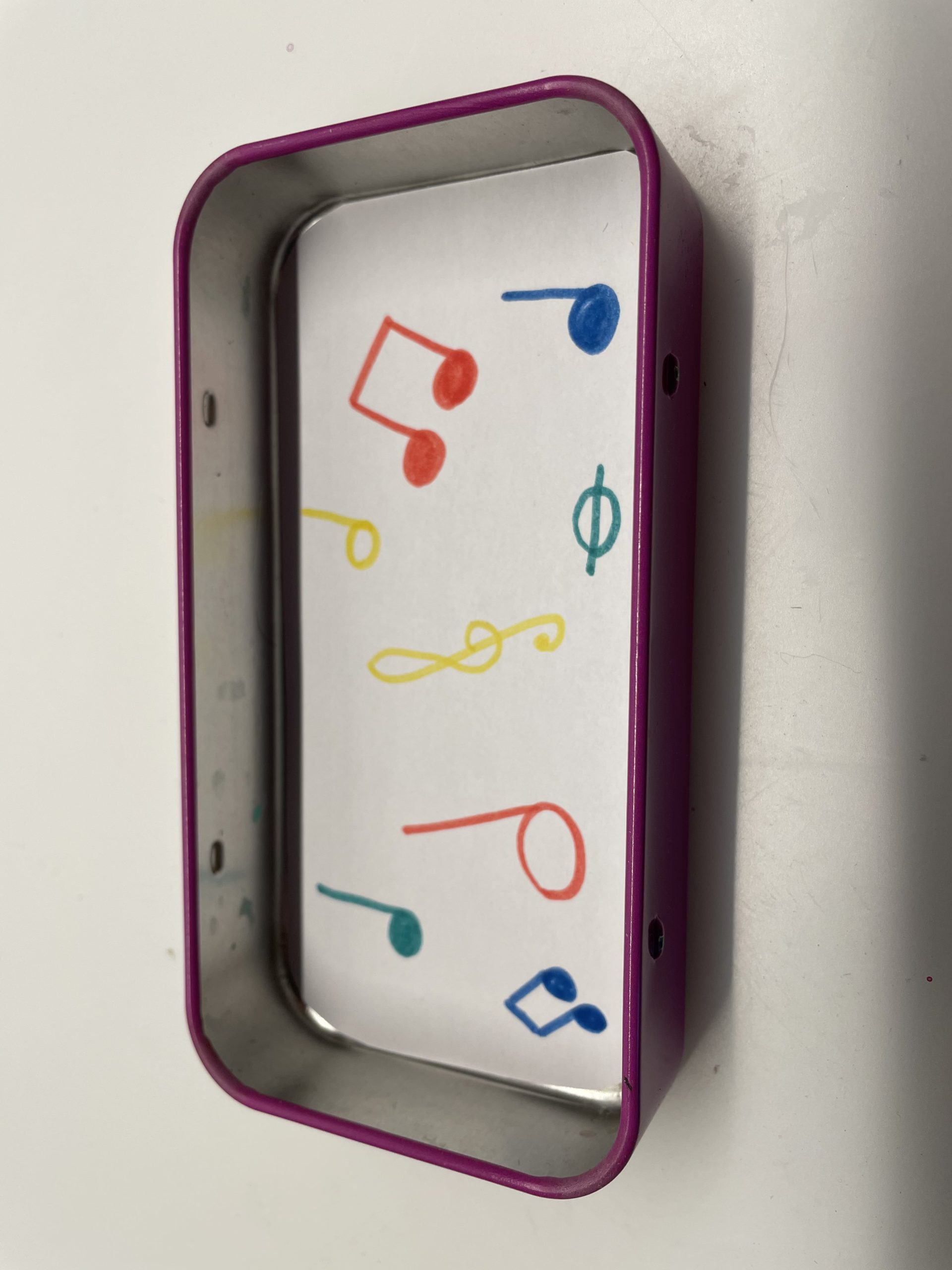


Now you need the colorful household rubbers.
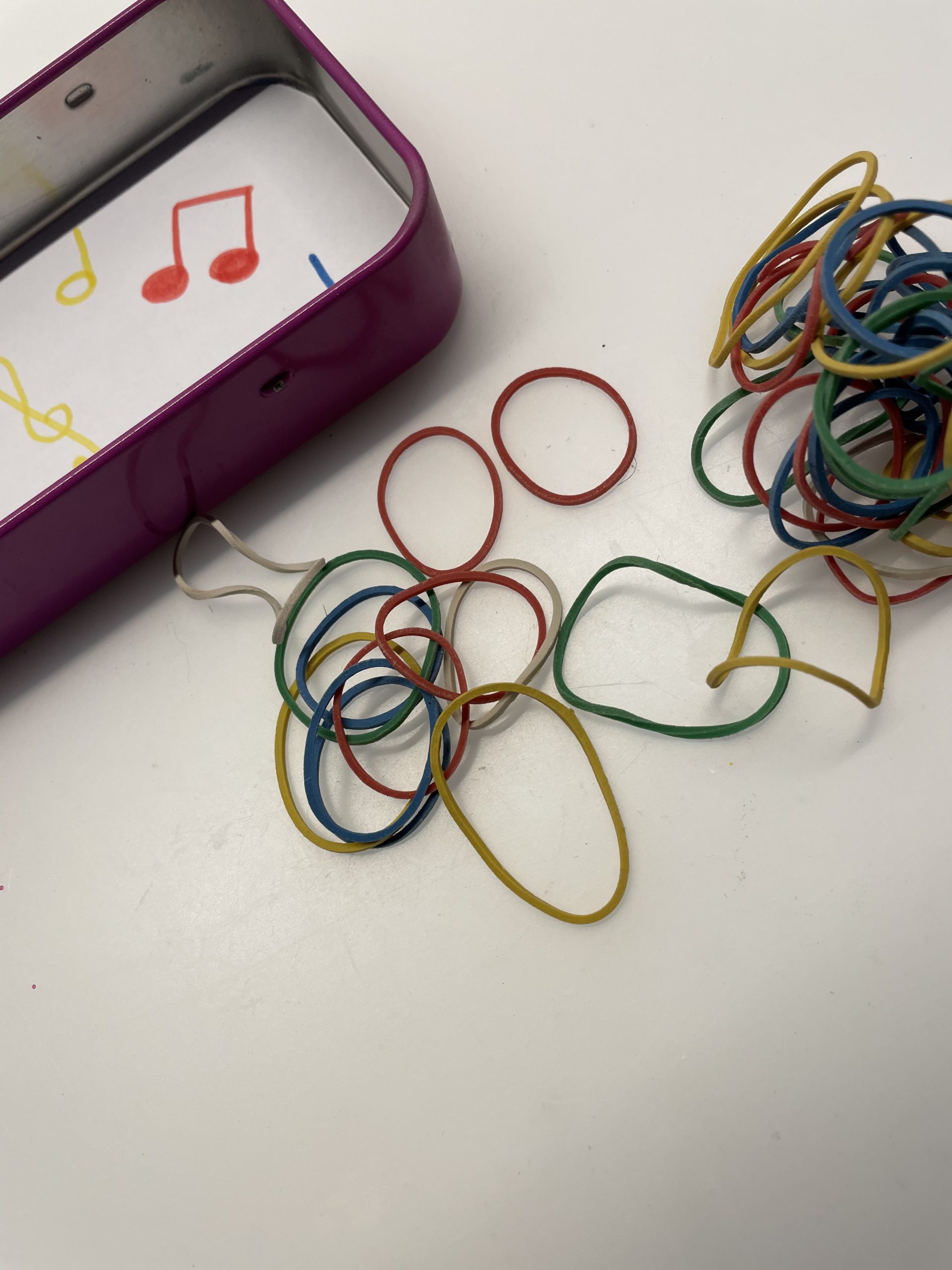


Stretch a rubber between your fingers and put it over the can.



Repeats the process for all 8-10 additional rubbers.
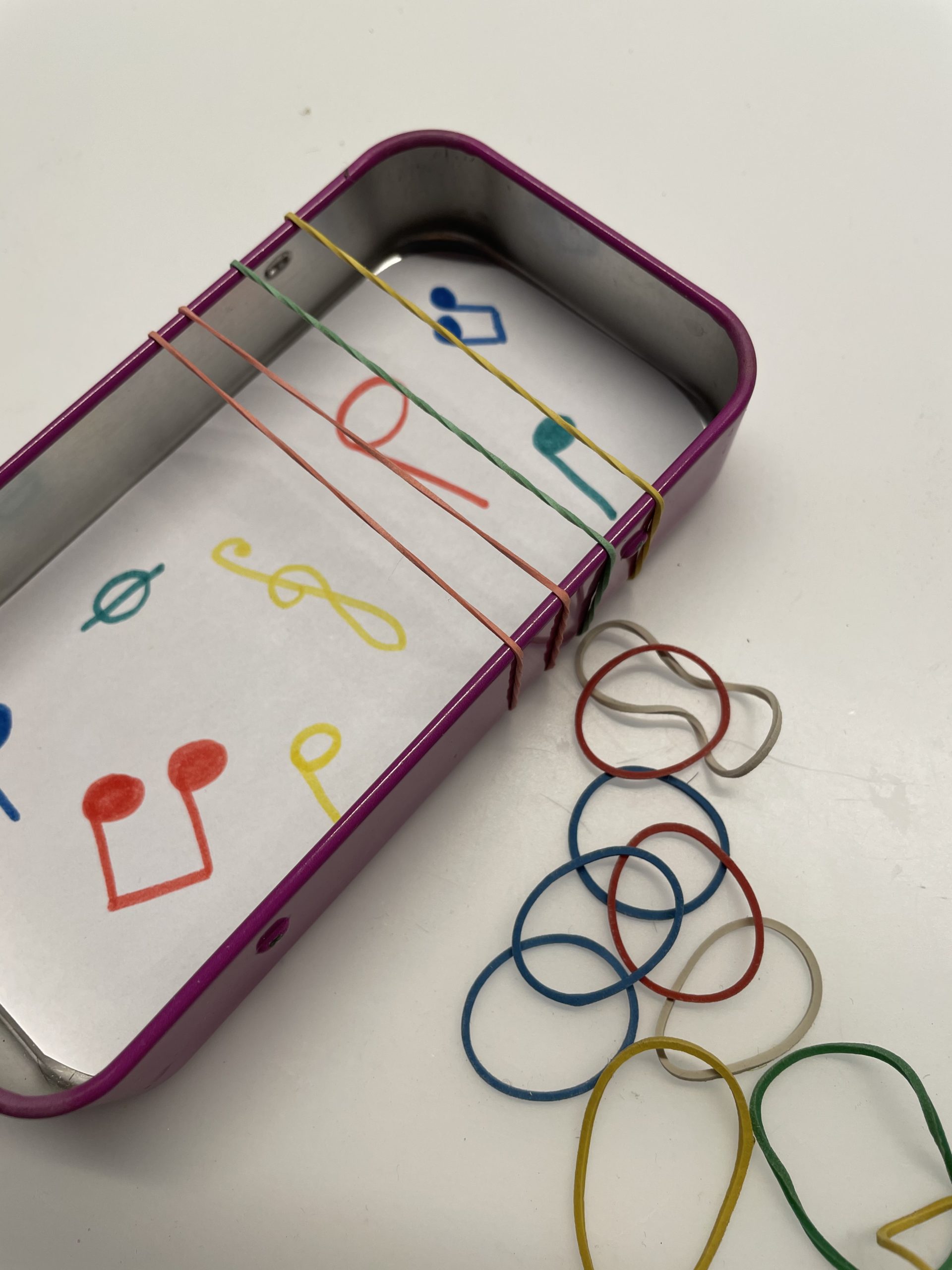


You always leave a little distance between the rubbers.
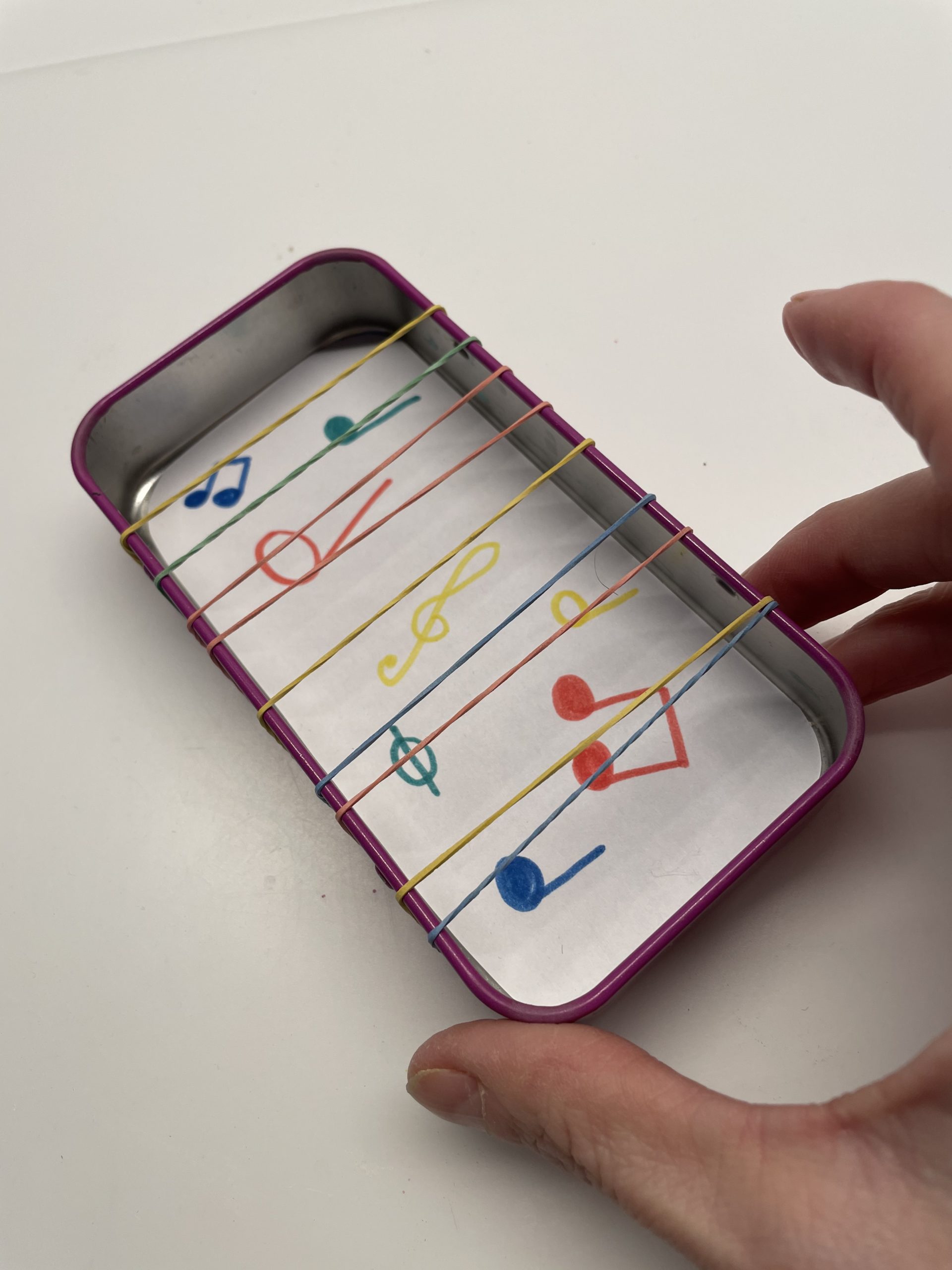


That's what the back of the can might look like.
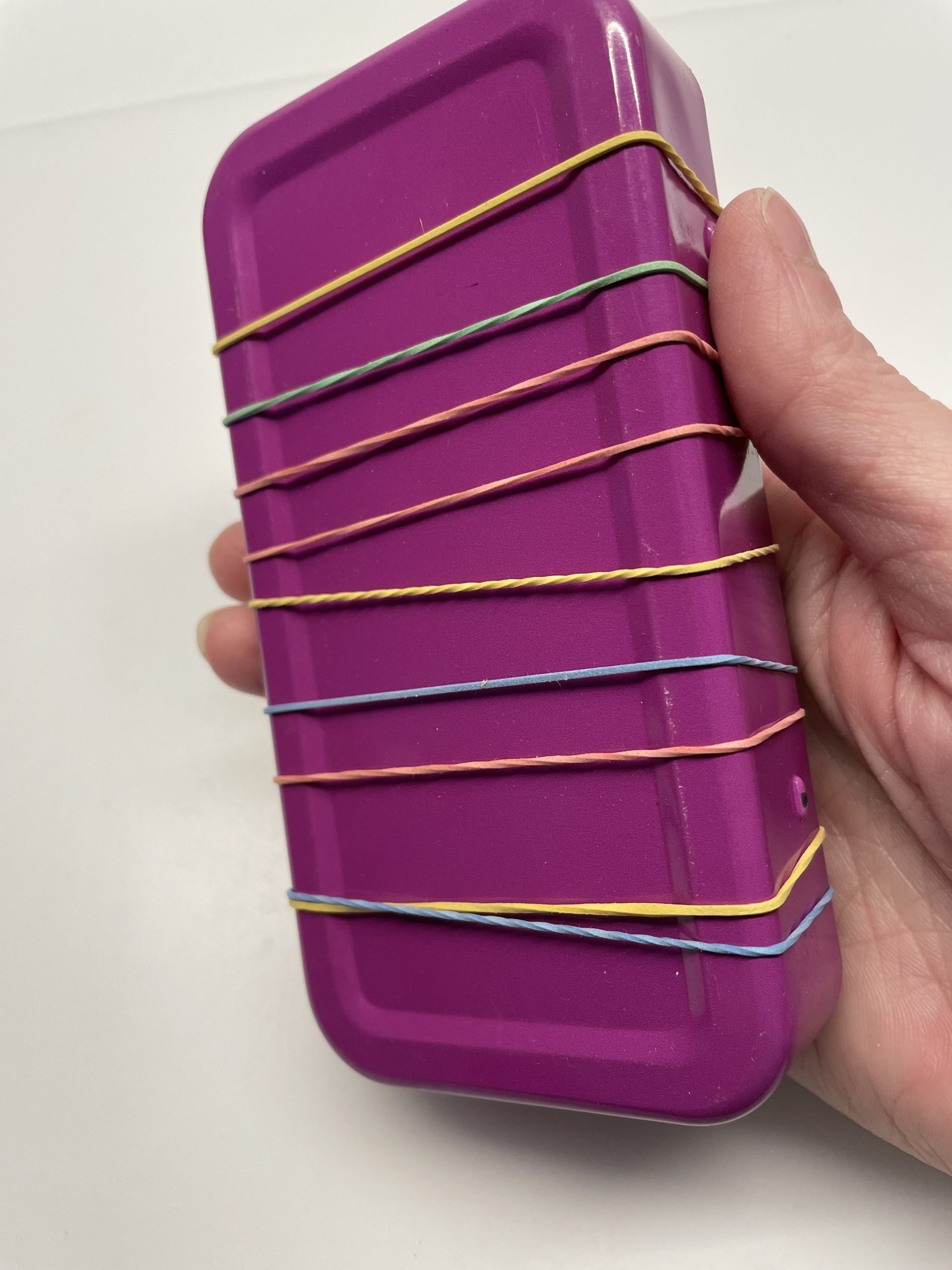


Now you can put your fingers over the rubbers and make them snap.
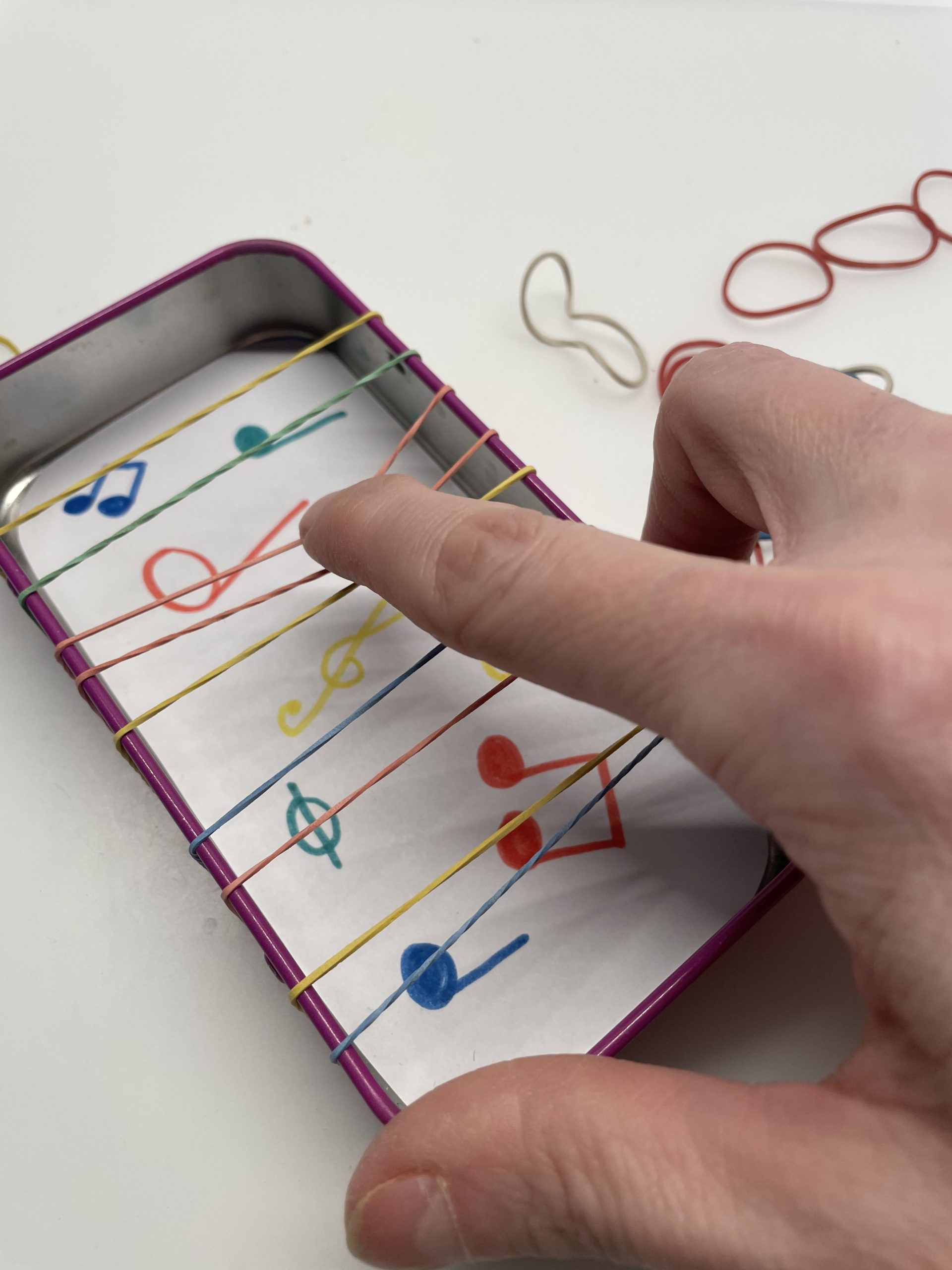


Or you pick the rubbers by pulling them up slightly and then letting them go.
Have fun!
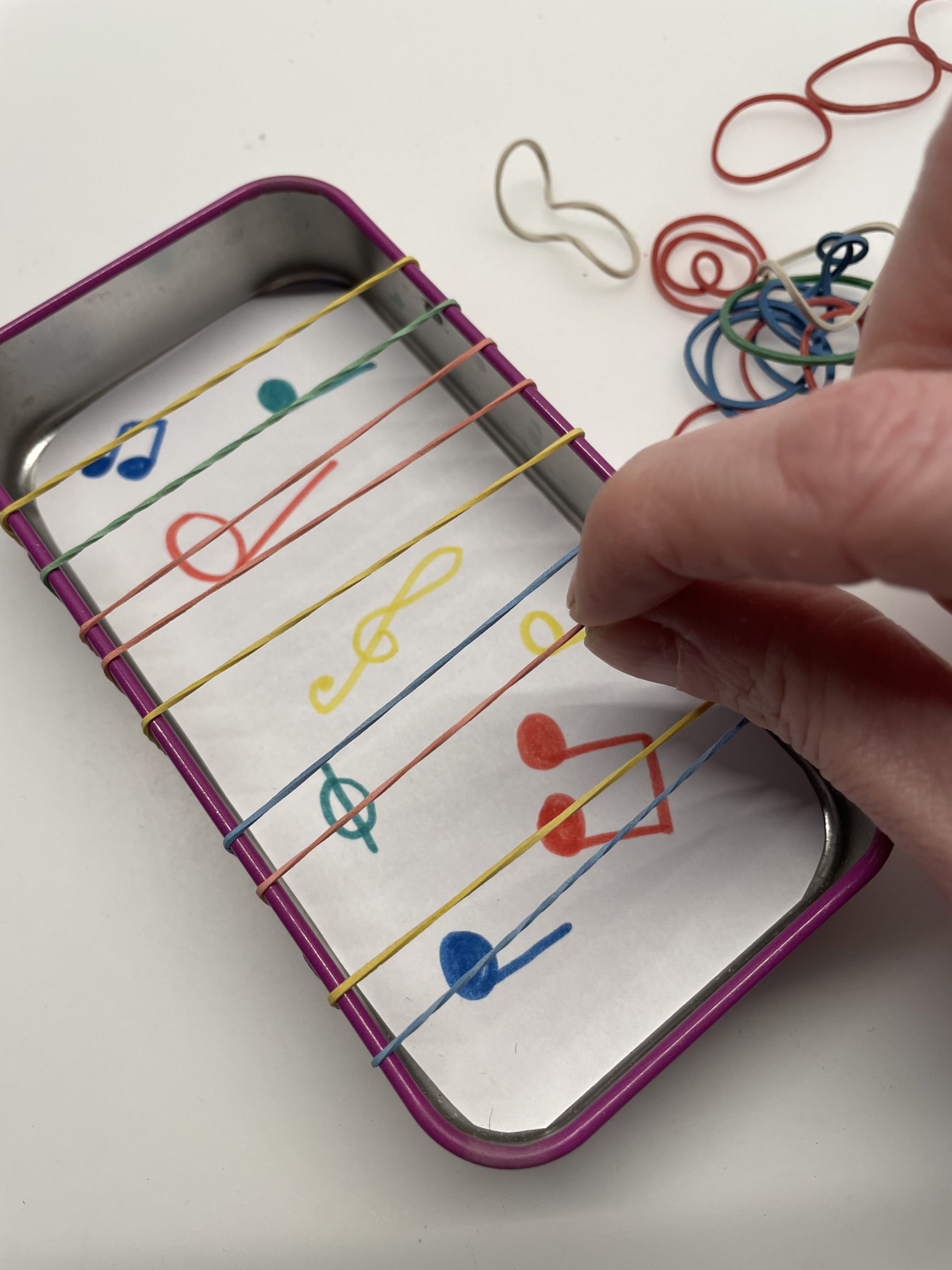


Instead of the household rubbers, you use a nylon cord for this.
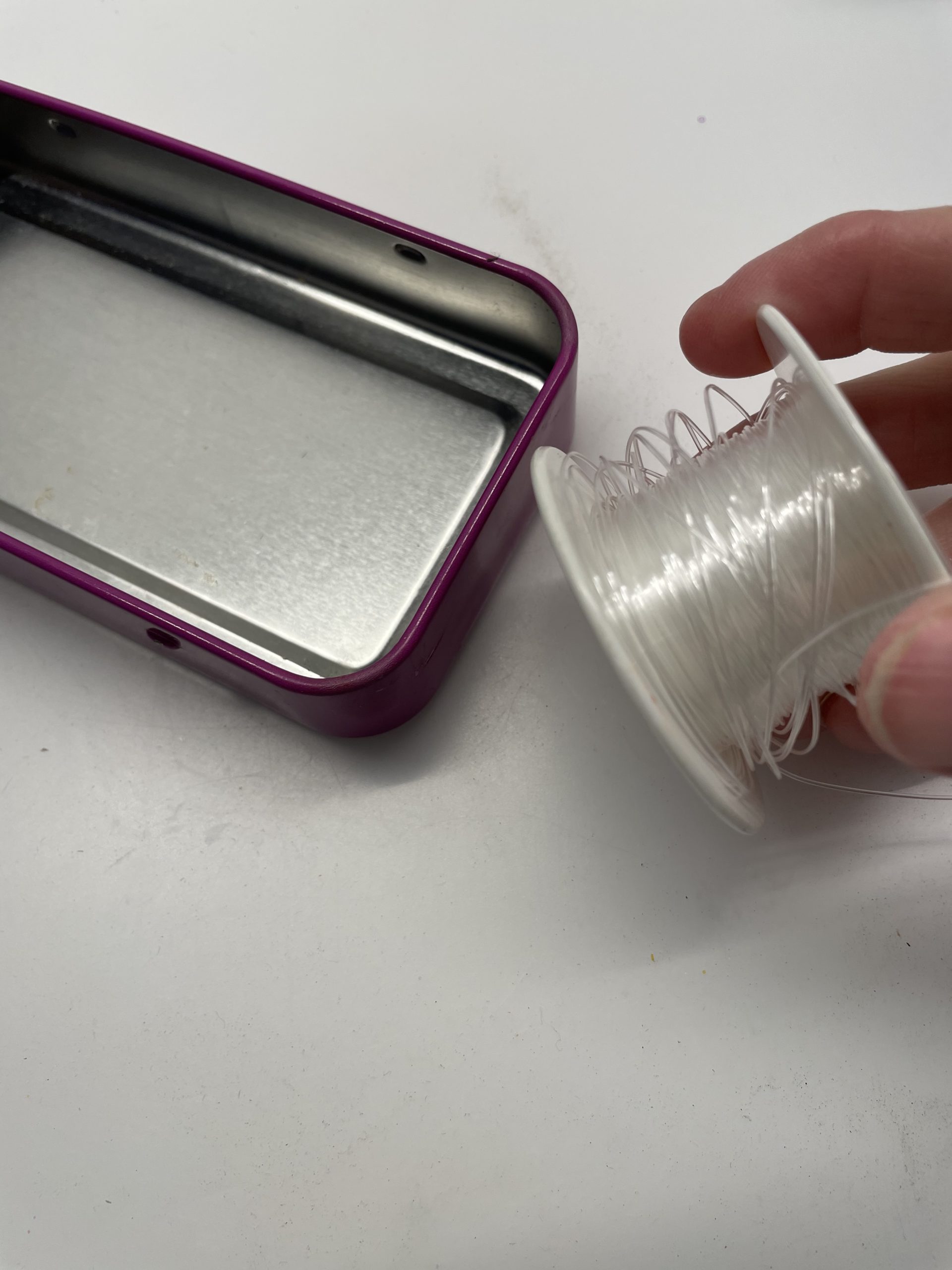


First tie the nylon cord around the can and fix it with a double knot.



Then push the knot to the back of the can.
The nylon cord must be tightened!
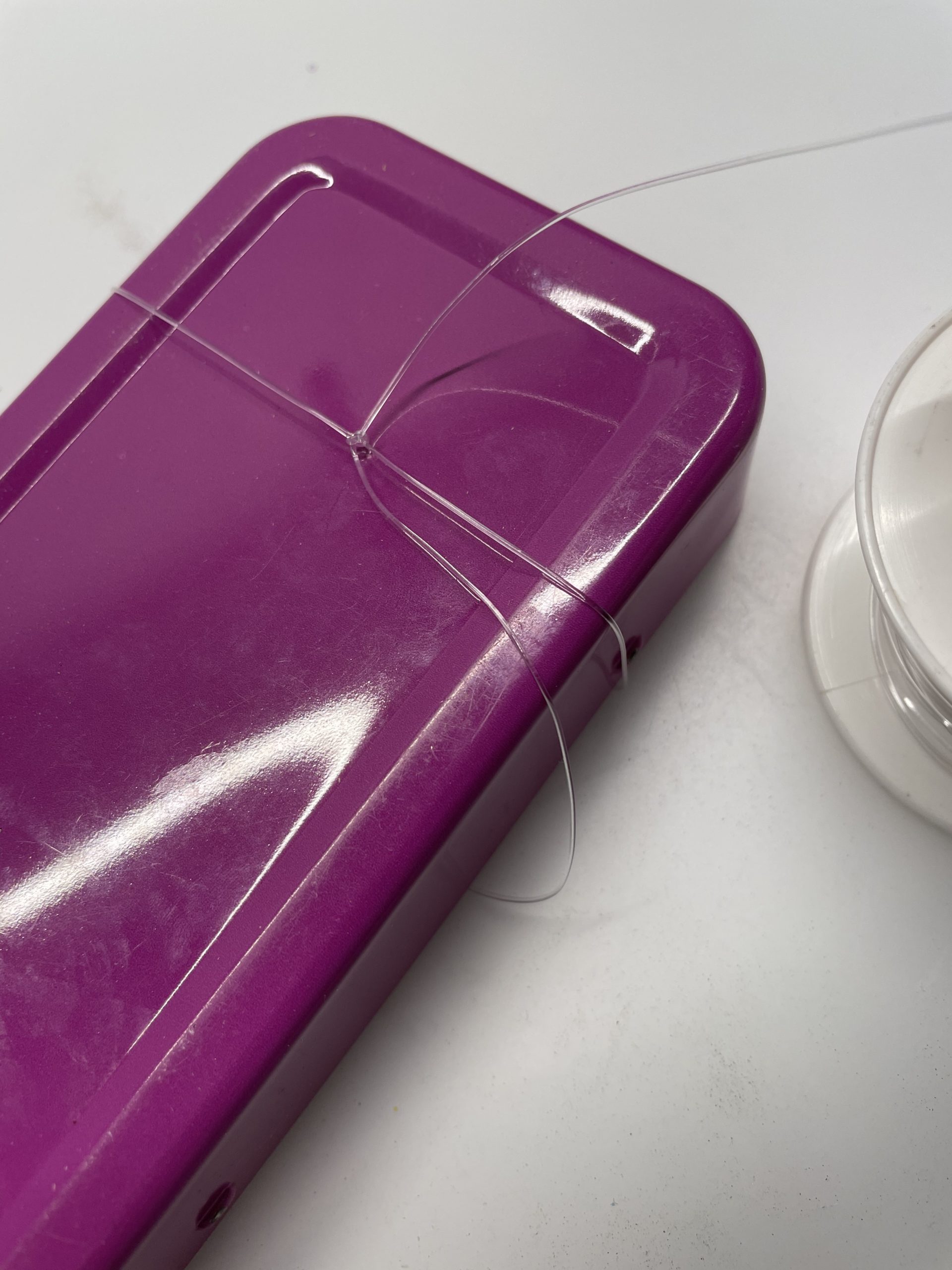


Now wrap the nylon cord around the can several times with a little distance.
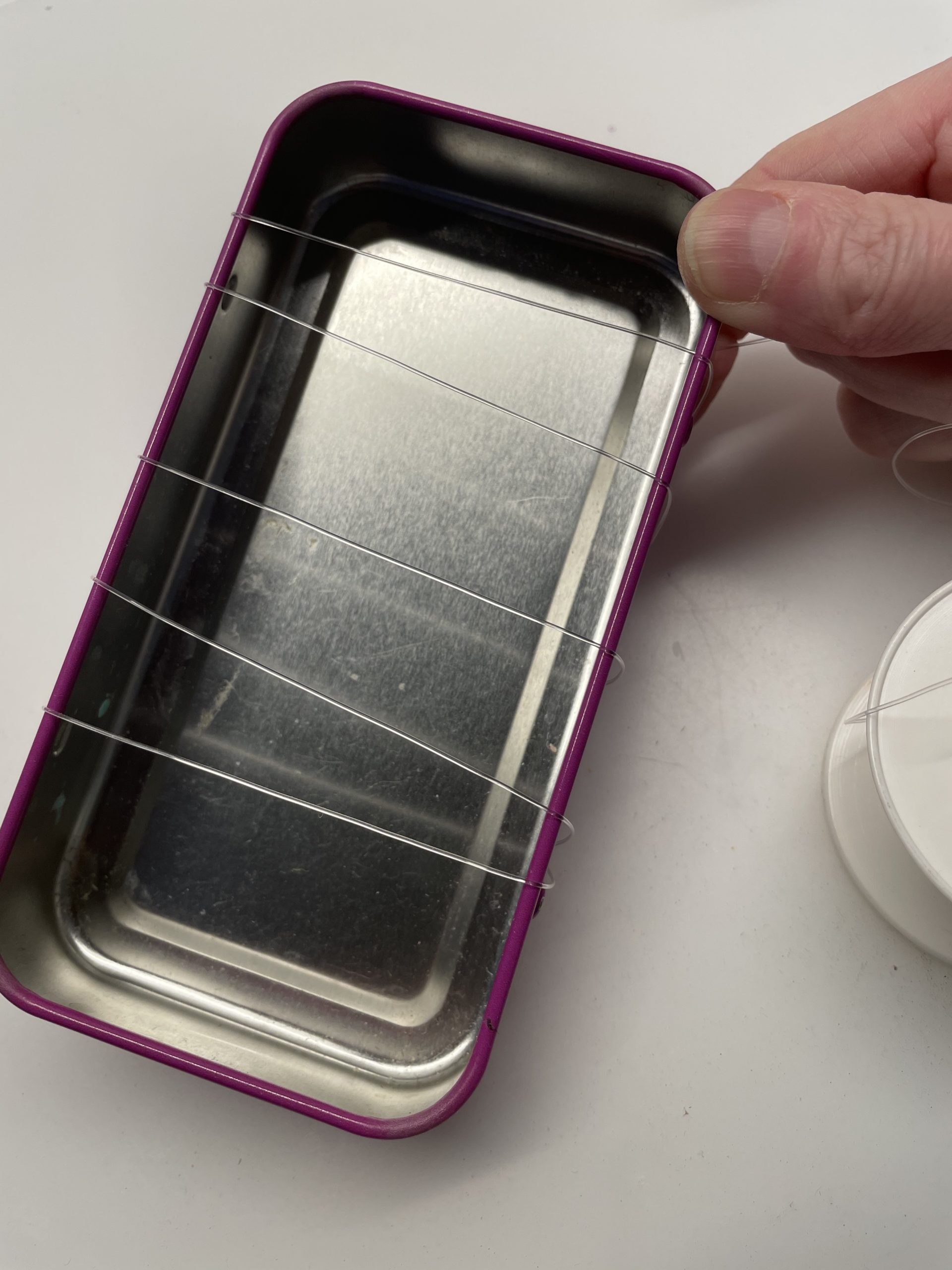


Make sure you keep the nylon thread on tension.
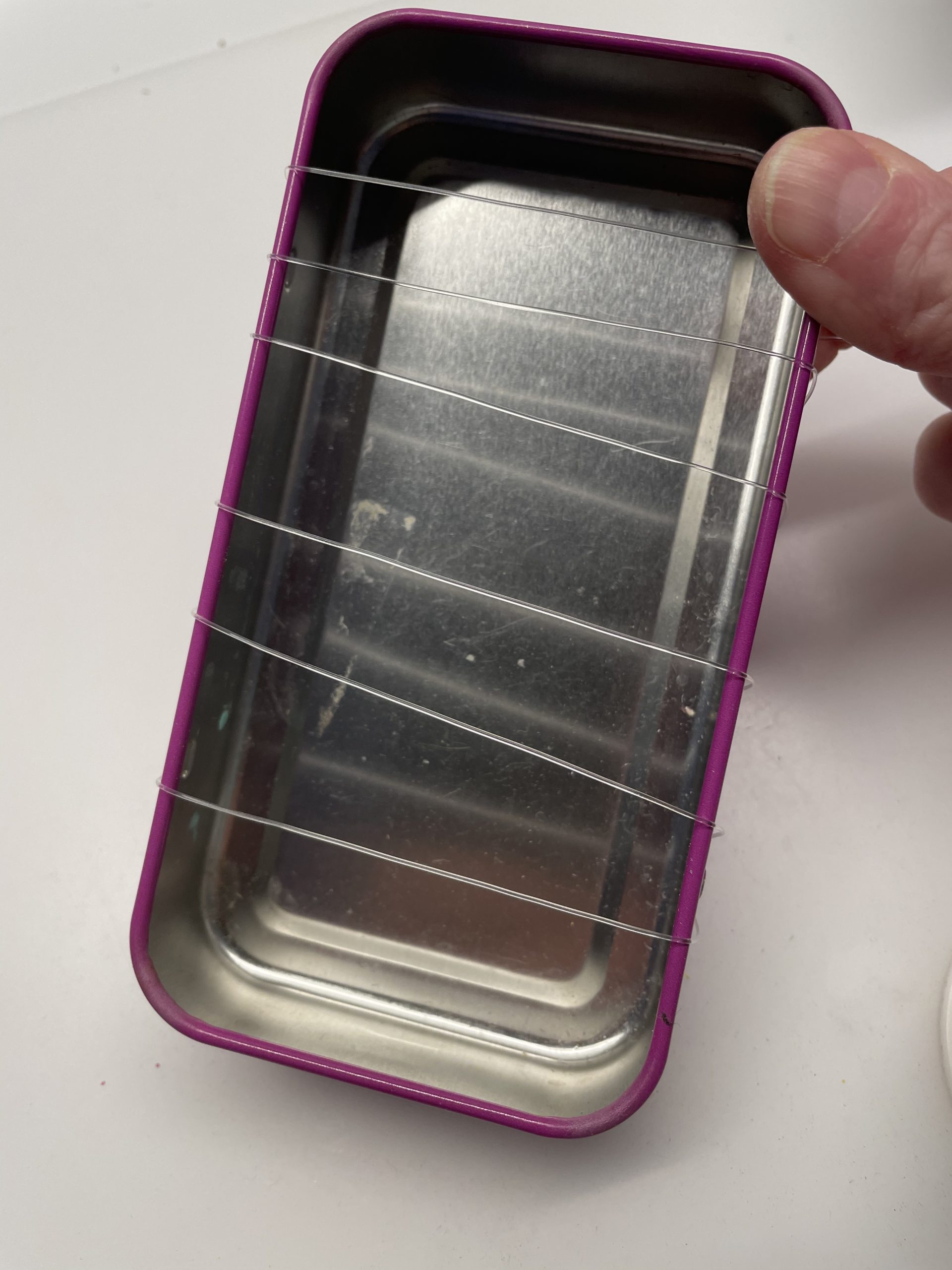


After wrapping, the nylon cord ends on the back. Now glues the nylon thread with a hot glue point to the back of the can. Cuts off the overstanding nylon cord only then.
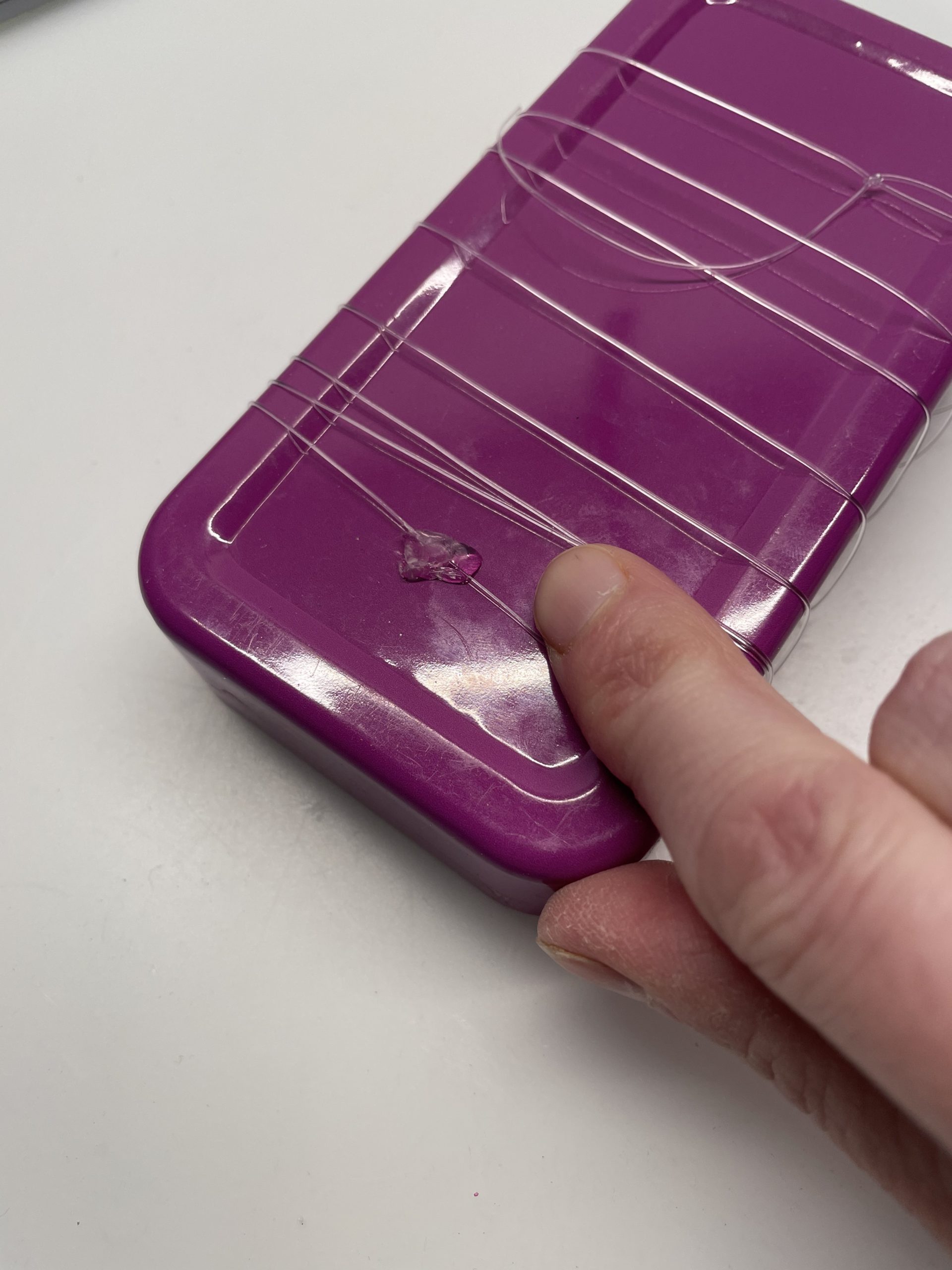


Now paint another insert for your can.
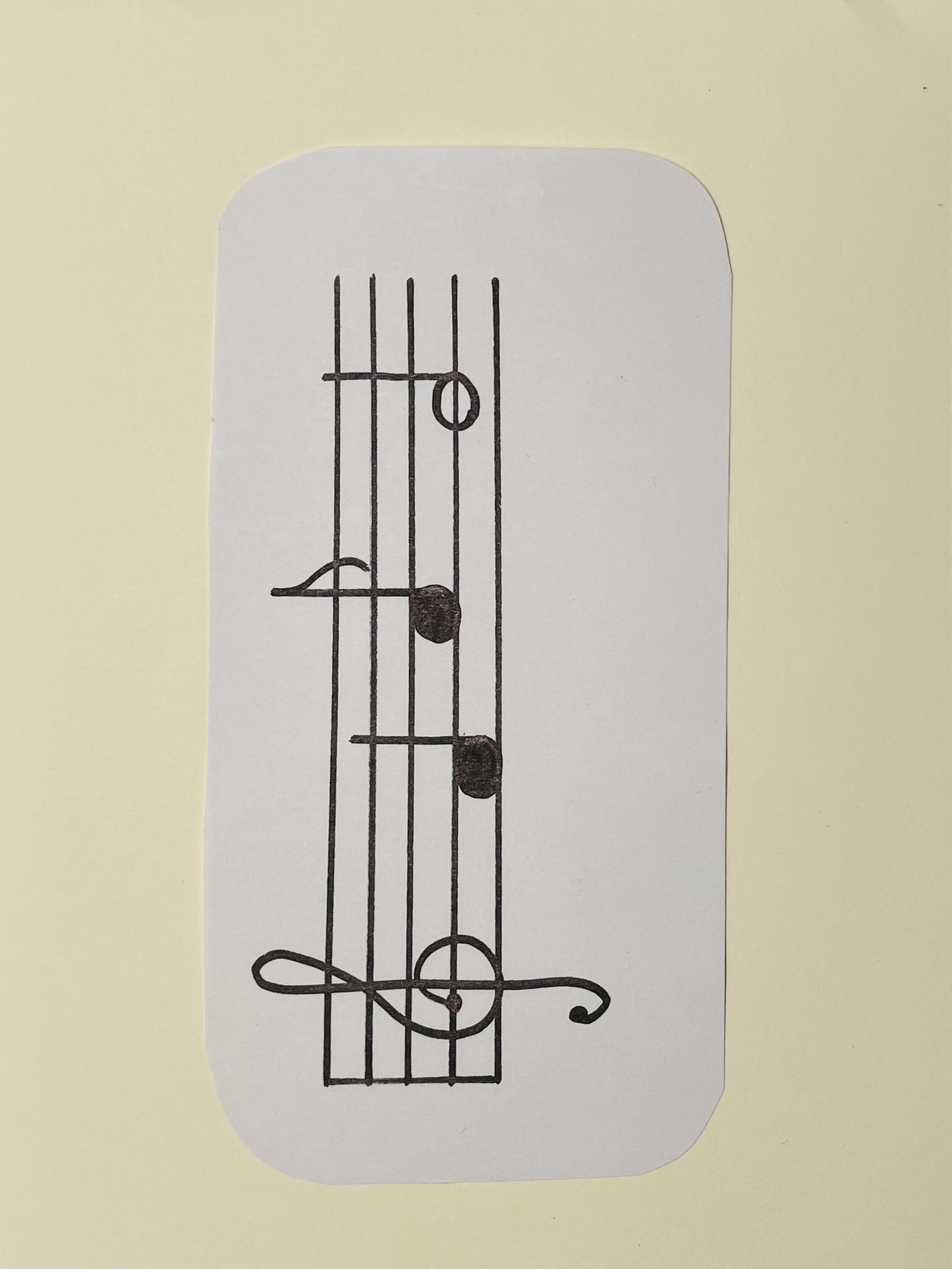





You can slide this into the can under the tensioned nylon threads on the side.
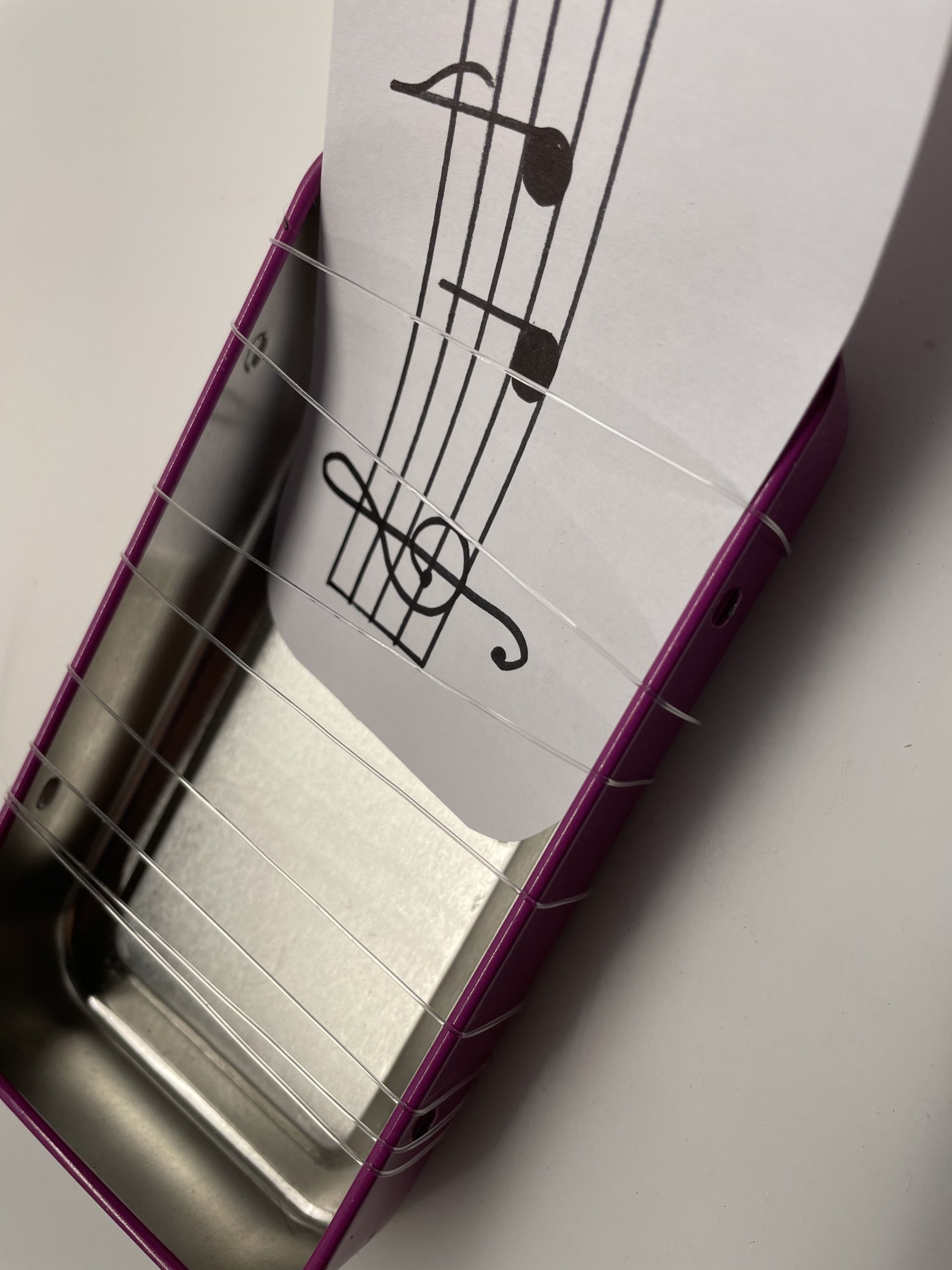


Positions the paper so that it lies perfectly inside the can.
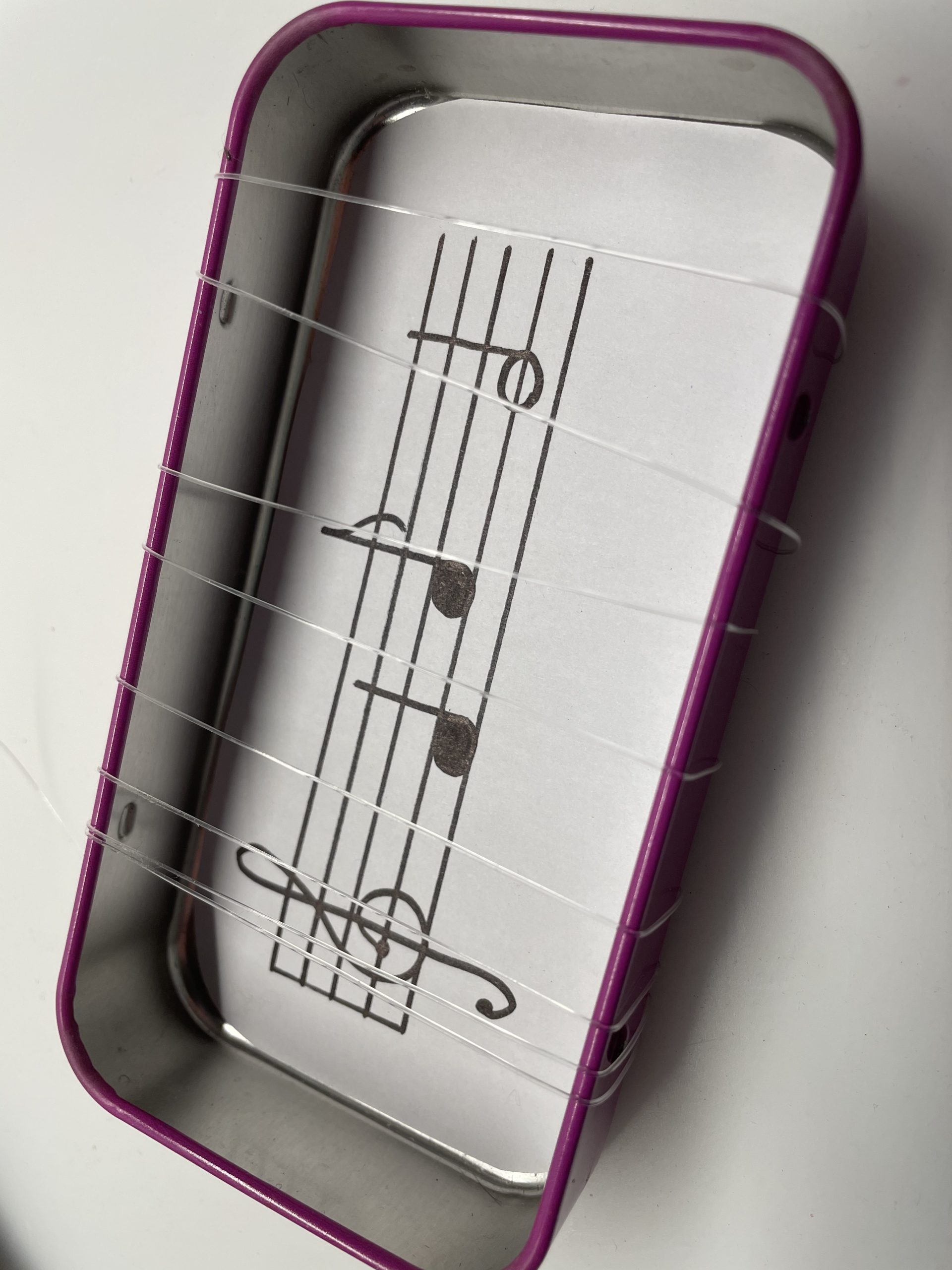


Now the can is ready to be used. You can pluck the nylon threads with your fingers, or use a firm overstrip to make the blade ring.



Try it out and enjoy accompanying your songs musically, plucking rhythms or creating your own melodies.
Materials
Directions
Find your materials together and put out the craft pad. First you need the square tin can.



Create a insert sheet in the size of your tin can. To do this, cut a paper to the size of your tin can. Then, for example, you paint music notes, note keys, etc. on it.



Then put the insert in the can. Fix it with an adhesive point.



Now you need the colorful household rubbers.



Stretch a rubber between your fingers and put it over the can.



Repeats the process for all 8-10 additional rubbers.



You always leave a little distance between the rubbers.



That's what the back of the can might look like.



Now you can put your fingers over the rubbers and make them snap.



Or you pick the rubbers by pulling them up slightly and then letting them go.
Have fun!



Instead of the household rubbers, you use a nylon cord for this.



First tie the nylon cord around the can and fix it with a double knot.



Then push the knot to the back of the can.
The nylon cord must be tightened!



Now wrap the nylon cord around the can several times with a little distance.



Make sure you keep the nylon thread on tension.



After wrapping, the nylon cord ends on the back. Now glues the nylon thread with a hot glue point to the back of the can. Cuts off the overstanding nylon cord only then.



Now paint another insert for your can.






You can slide this into the can under the tensioned nylon threads on the side.



Positions the paper so that it lies perfectly inside the can.



Now the can is ready to be used. You can pluck the nylon threads with your fingers, or use a firm overstrip to make the blade ring.



Try it out and enjoy accompanying your songs musically, plucking rhythms or creating your own melodies.
Follow us on Facebook , Instagram and Pinterest
Don't miss any more adventures: Our bottle mail





